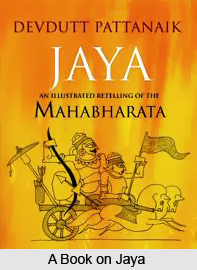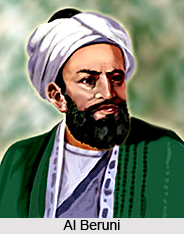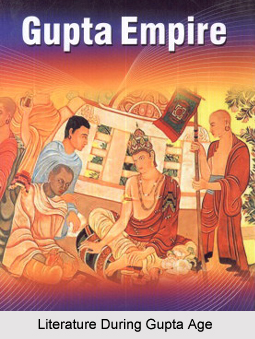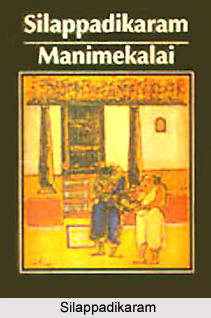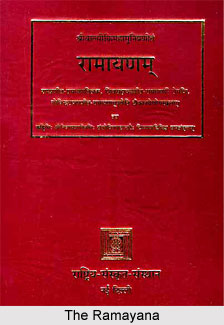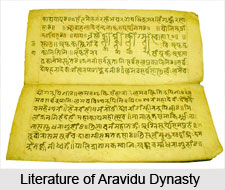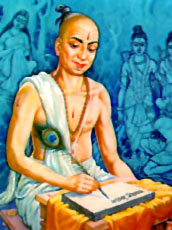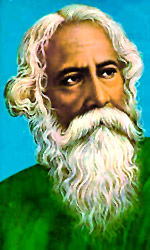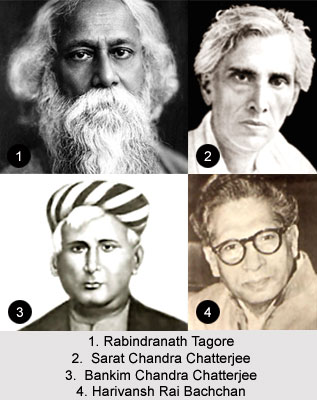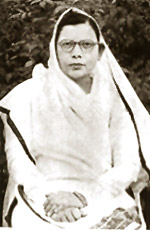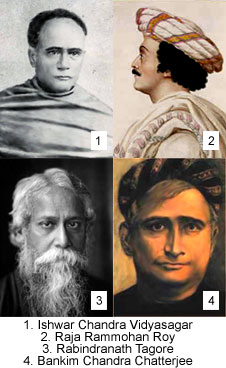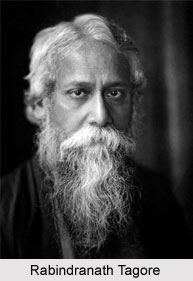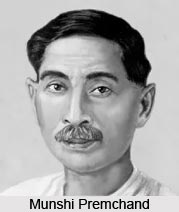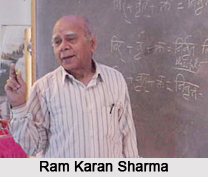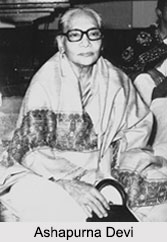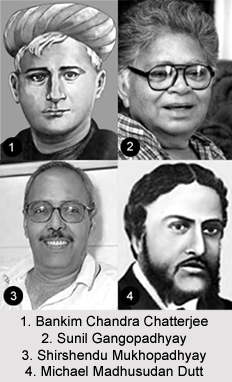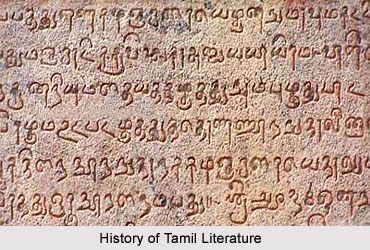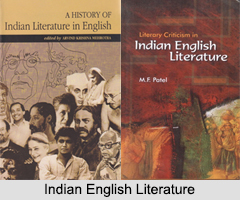About Marathi Literature
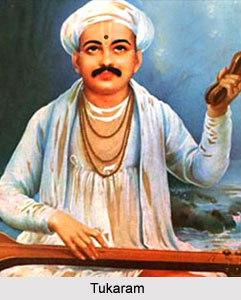 Marathi literature defines that bulk of literature in Marathi language, deduced from a version of Sanskrit language, and spoken primarily in the Indian state of Maharashtra and penned in the Devanagari script.
Marathi literature defines that bulk of literature in Marathi language, deduced from a version of Sanskrit language, and spoken primarily in the Indian state of Maharashtra and penned in the Devanagari script.
Marathi literature and its initiation can be traced back far beyond the 10th century. It had descended from Sanskrit through Pali, Maharashtri and Maharashtra - Apabhramsa. Though the earliest known Marathi literary inscription discovered at the foot of the statue at Shravanabelgola in Karnataka is dated back to c. 983 C.E., Marathi literature in fact had begun with religious writings by the saint-poets belonging to Mahanubhava and Warkari sects. Mahanubhava saints were believed to employ prose as their principal medium, whereas, Warkari saints chose poetry as the basic medium. The early saint-poets in this literary genre were Mukundaraj who penned Vivekasindhu, Dnyaneshwar (1275-1296) (who penned Bhawarthadeepika, which is prevalently known as Dnyaneshwari, a 9000-couplets long commentary on the Bhagavad Gita) and Namdev. The Marathi litterateurs were soon succeeded by the Warkari saint-poet Eknath (1528-1599). Mukteswar is legendary for translating the colossal epic Mahabharata into Marathi. Social reformers like saint-poet Tukaram virtually had transformed Marathi literature into an enriched literary language. Ramdas`s (1608-1681) Dasabodh and Manache Shlok are well-known renditions of this tradition. The origin and growth of Marathi literature is however indebted to two significant events. The first was the rise of the Yadava dynasty whose capital was situated at Devgiri. The Yadava dynasty of 1189-1320 A.D., which had embraced Marathi as the court language and massively patronised Marathi learned men, contributed profoundly in the origin and tremendous growth of Marathi literature. The second event was the coming of two religious sects known as Mahanubhav Panth and Warkari Panth, described above.
Marathi literature can principally be classified into two ages: Ancient or Old Marathi literature (1000-1800 A.D.) and Modern Marathi Literature (1800 onwards). The former consisted chiefly of poetry composed in metres and restricted to the poet`s choice of words and rhythms. It was particularly devotional, narrative and pessimistic in nature, for old Marathi poets had not been able to formulate satire, parody, irony and humor into their poetry. The Modern Period can further be sub-divided into four ages. The first period commences from 1800 to 1885, the second from 1885 to 1920, the third from 1921 to 1945, and the culminating from 1946 to the present times. This period had remained witness to the development of all forms of prose and poetry, also encompassing scientific and technical literature.
During the 18th century, some widely-acknowledged works like Yatharthadeepika (by Vaman Pandit), Naladamayanti Swayamvara (by Raghunath Pandit), Pandava Pratap, Harivijay, Ramvijay (by Shridhar Pandit) and Mahabharata (by Moropant) were developed one after the other in Marathi literature. Nevertheless, the most versatile and competent writer amongst the Marathi poets was Moropanta (1729-1794), whose Mahabharata was the first ever epic poem in Marathi. The historical section of the old Marathi literature was unparalleled, due to its incorporation of both prose and poetry. The prose section contained the Bakhars that were authored after the foundation of the Maratha kingdom by emperor Shivaji. The poetry section comprised the Povadas and the Katavas, composed by the Shahirs. The period from 1794 to 1818 is regarded as the closing period of the Old Marathi literature and the commencement of the Modern Marathi literature.
In the history of Marathi literature, Tukaram (1608-1651) has been lent a unique and unbeatable stature. A true genius, Tukaram`s poetry sprang forth from his magnificent inspirations. He was a radical reformer and has often been termed `Sant Tukaram`. Terseness, clarity, vigour and earnestness could be pointed out in each line of his poetry. Tukaram`s associate Ramdas (1608-1681), and his unforgettable Dasabodha is an inspiring and impressive piece in Marathi. Eighteenth century poetry of Marathi literature is well represented by Vaman Pandit (Yathartha Dipika), Raghunath Pandit (Nala Damayanti Swayamvara) and Shridhar Pandit (Pandavpratap, Harivijay and Ramvijay).
Under the British rule, Marathi literature again was to witness its metamorphosis into fresh kind of publishing. Attempts were made to enrich both the language and literature. The Raja of Tanjore had triumphantly endeavoured to translate the first English Book into Marathi in 1817. Several more such endeavours were made and translation work was encouraged and promoted a lot. Chhatre, Bal Shastri Jambhekar, Lokahitavadi and Jotiba Phule had begun to pen on various topics in Marathi.
The first Marathi newspaper was started in 1835, and Baba Padamji`s Yamuna Paryatan was the first Marathi novel devoted to social reform in 1857. However, this period was a lean one for original poetry and only translations of Sanskrit poems were produced. Establishment of the University of Bombay in 1858 and the starting of the newspaper Kesari in 1880-81 lent a boost to the development of Modern Marathi Literature. Keshavasuta (1866-1905), the first Marathi revolutionary poet, launched the genre of Modern Marathi poetry with his first poem. During this period two groups of poets, Ravikiran Mandal and Kavi Tambi, together boosted some great poets like Ananta Kanekar (Chandarat), Kavi Anil (Phulwat) and N G Deshpande towards perfection in the art. Poetry in Marathi literature post the 1945 era, basically started to explore and scout human life in all its shades. B S Mardhekar set the fashion of this trend for P S Rage, Vinda Karandikar, Vasant Bapat and Shanta Shelke.
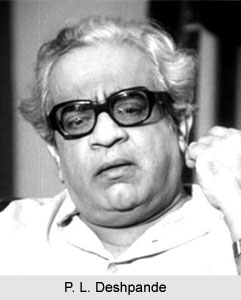 Born in 1843, Vishnudas Bhave was the pioneer of Marathi drama, bringing in yet another new era of modernism and radicalism against the colonialists. Other great dramatists in Marathi literature comprised: B P Kirloskar (Saubhadra), G B Deval (Sharada), R G Gadkari (Ekach Pyala), Mama Varerkar (Apporva Bangal) and P L Deshpande (Amaldar). The first Marathi novel to be published during pre-independence India was Madhali Sthiti by Hari Narayan Apte (1864-1919). Natha Madhav, CV Vaidya, Prof. V M Joshi, V S Khandekar, Sane Guruji, Kusumvati Deshpande, Kamalabai Tilak are some of the prominent novelists of the Marathi language. The short story and essay forms in Marathi came into existence precisely during this period, in the hands of men like Diwakar Krishna, H N Apte and V S Gurjar. S M Mate, Durga Bhagwat, N S Phadke are well-known essayists in Marathi, a rich language in all its forms and branches with a history of more than a thousand years. It occupies a distinguishable position in the field of Indian Literature and continues to do so even in the 21st century, under stalwarts like Mahesh Elkunchwar (Yugant), Arun Kolatkar (Bhijaki Vahi) or, Asha Bage (Bhoomi).
Born in 1843, Vishnudas Bhave was the pioneer of Marathi drama, bringing in yet another new era of modernism and radicalism against the colonialists. Other great dramatists in Marathi literature comprised: B P Kirloskar (Saubhadra), G B Deval (Sharada), R G Gadkari (Ekach Pyala), Mama Varerkar (Apporva Bangal) and P L Deshpande (Amaldar). The first Marathi novel to be published during pre-independence India was Madhali Sthiti by Hari Narayan Apte (1864-1919). Natha Madhav, CV Vaidya, Prof. V M Joshi, V S Khandekar, Sane Guruji, Kusumvati Deshpande, Kamalabai Tilak are some of the prominent novelists of the Marathi language. The short story and essay forms in Marathi came into existence precisely during this period, in the hands of men like Diwakar Krishna, H N Apte and V S Gurjar. S M Mate, Durga Bhagwat, N S Phadke are well-known essayists in Marathi, a rich language in all its forms and branches with a history of more than a thousand years. It occupies a distinguishable position in the field of Indian Literature and continues to do so even in the 21st century, under stalwarts like Mahesh Elkunchwar (Yugant), Arun Kolatkar (Bhijaki Vahi) or, Asha Bage (Bhoomi).
The first English book was translated in Marathi in 1817; the first Marathi newspaper was begun in 1835; Baba Padamji had penned numerous books on social reforms, like the Yamuna Paryatana in 1857. Lokmanya Tilak`s newspaper Kesari, set up in 1880, had provided a platform for sharing literary views. These exceedingly blood-boiling news during the then British-occupied India was reason enough for Marathi literature to walk tall in every sphere of life. Truly literature in the Marathi language had contributed whole-heartedly to the evolving modern Indian society. Marathi drama efficiently had further aided Indians at this time. Here also a different genre called Sangit Natya or Musicals could be witnessed. The first play to be staged was V.A. Bhave`s Sita Swayamvar in 1841. Later, Kirioskar (1843-85) and G.B. Deval (1854-19l6) brought in a romantic aroma and social content to the highly matured Marathi literary genre. But, Krishnaji Prabhakar Khadilkar (1872-1948) with his banned play Kichaka-Vadh (1910), indeed had set the trend of `political playwriting` moving. Later on stalwarts like Ram Ganesh Gadkari and Prahlad keshav Atre ably sufficed this "stage".
Marathi drama began flourishing during the 1960s and 1970s, with few of the best Indian actors available to take on a variety of protagonists. Mohan Agashe, Sriram Lagoo, Kashinath Ghanekar, Prabhakar Panshikar playacted umpteen immortal characters penned by greats like Vasant Kanetkar, Kusumagraj, Vijay Tendulkar to name a few. This Drama Movement was ably supported by Marathi films, which did not however enjoy a continuous success, as did the continuing Marathi literature. Starting with V. Shantaram and before him the pioneer Dadasaheb Phalke, Marathi cinema however went on to influence contemporary Hindi cinema, giving rise to a new direction of Marathi literary domain. Director Raja Paranjape, music director Sudhir Phadke, lyricist G. Madgulkar and actor Raja Gosavi came together to render quiet a few hits in later periods.
Marathi language as spoken by people in Maharashtra was throughout influenced by drama and cinema, together with contemporary literature. Modern Marathi poetry began with Mahatma Jyotiba Phule`s compositions. The later poets like Keshavsuta, Balakavi, Govindagraj, and the poets of Ravi Kiran Mandal like Madhav Julian penned poetry, which was heavily influenced by Romantic and Victorian English poetry; it was largely sentimental and lyrical. P. K Atre, the renowned satirist and politician, authored a parody of this sort of poetry in his collection Jhenduchi Phule.
As time progressed, Marathi literature also gained its potential in the extremely competitive world of literary section, with Sane Guruji (1899-1950) contributing to children`s literature in Marathi. His major works comprise Shyamchi Aai (Shyam`s Mother), Astik (Believer), Gode Shevat (The Sweet Ending), etc. He also had translated and simplified numerous Western Classics and published them in a book of stories titled Gode Goshti (Sweet Stories). Vishnu Sakharam Khandekar (1889-1976)`s Yayati had earned him the Jnanpith Award for 1975. He also had penned umpteen other novels, short stories, essays etc. Khandekar`s major works include Don Dhruv (Two Poles), Ulka (Meteorite), Krounchavadh, Jalalela Mohar and Amrutvel among many others.
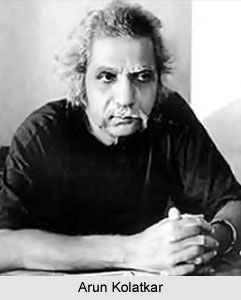 The major prototypal shift in Marathi literature awareness began in the forties with the avant-garde modernist poetry of B.S. Mardhekar. In the mid fifties, the `little magazine movement` had gained its sufficient momentum. With the aid of this movement, the literature published writings, which were non-conformist, radical and experimental. The Dalit literary movement also had gained intensity due to the little magazine movement. This radical movement was influenced by the philosophy of Dr. Babasaheb Ambedkar and challenged the literary establishment, which largely comprised middle class, urban and upper caste men. The little magazine movement, in fact, had thrown up many excellent writers. Bhalchandra Nemade is a well-known novelist, critic and poet. The poetry of Arun Kolatkar, Dilip Chitre, Namdeo Dhasal, Vasant Abaji Dahake, Manohar Oak and many other modernist Marathi poets is complex, rich and provocative. Bhau Padhye, Vilas Sarang Shyam Manohar and Visharm Bedekar are also well known fiction writers.
The major prototypal shift in Marathi literature awareness began in the forties with the avant-garde modernist poetry of B.S. Mardhekar. In the mid fifties, the `little magazine movement` had gained its sufficient momentum. With the aid of this movement, the literature published writings, which were non-conformist, radical and experimental. The Dalit literary movement also had gained intensity due to the little magazine movement. This radical movement was influenced by the philosophy of Dr. Babasaheb Ambedkar and challenged the literary establishment, which largely comprised middle class, urban and upper caste men. The little magazine movement, in fact, had thrown up many excellent writers. Bhalchandra Nemade is a well-known novelist, critic and poet. The poetry of Arun Kolatkar, Dilip Chitre, Namdeo Dhasal, Vasant Abaji Dahake, Manohar Oak and many other modernist Marathi poets is complex, rich and provocative. Bhau Padhye, Vilas Sarang Shyam Manohar and Visharm Bedekar are also well known fiction writers.
Datta Raghunath Kavthekar was a renowned Marathi novelist of the 1930s, sweeping through the late 1970s era and was popular for novels and collections of short stories, depicting aspects of human relationships and emotions. Movies based on his stories include Kunkavacha Karanda. Narayan Sitaram Phadake (N.S. Phadake), Prahlad Keshav Atre (P.K. Atre), Krishnaji Keshav Damale (known as Keshavsut), Purushottam Laxman Deshpande (affectionately referred to as "Pu La") are some of the very few mentioned greats in Marathi literature, ever to have contributed to almost all sorts of genres. Ranging from pure situational humour to modern classics, to Marathi film music direction, "Pu La" virtually achieved everything. He has written, directed and rendered music to a Marathi classic - Gulacha Ganpati. Marathi literature also was enlightened by his contribution of a great deal to Indian classical music, by way of his enthused solo performances on the harmonium.
Early Marathi Literature
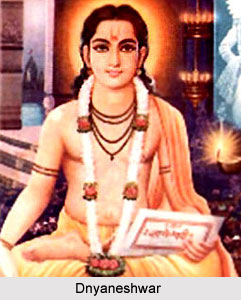 Early Marathi Literature goes back a long way and can be traced to almost the eleventh century. A lot of the literary works of early Maharashtra, as of any other region, were influenced by the prevailing political- religious and social conditions of the time. During the thirteenth century, a great variety of literature, such as treatises in astrology and medicine, folktales, stories for children, folksongs, and poetry, flourished in Marathi. The domination of orthodox Hindu traditions, rituals, and institutions through the use of Sanskrit language was pervasive at this time. Consequently, it was a period of change, when representatives of heterodox religious movements were challenging cultural hegemony of the Brahmins. The bhajans (religious songs) written by members of these cults were part of the oral traditions observed in many societies before the advent of the printing press. Oral religio-cultural presentations were commonly used for communicating literature to the masses or for religious and philosophical discourse. The major part of written Marathi literature was accessible to only high-caste Hindus who were either Sanskrit scholars, professional scribes, or rulers.
Early Marathi Literature goes back a long way and can be traced to almost the eleventh century. A lot of the literary works of early Maharashtra, as of any other region, were influenced by the prevailing political- religious and social conditions of the time. During the thirteenth century, a great variety of literature, such as treatises in astrology and medicine, folktales, stories for children, folksongs, and poetry, flourished in Marathi. The domination of orthodox Hindu traditions, rituals, and institutions through the use of Sanskrit language was pervasive at this time. Consequently, it was a period of change, when representatives of heterodox religious movements were challenging cultural hegemony of the Brahmins. The bhajans (religious songs) written by members of these cults were part of the oral traditions observed in many societies before the advent of the printing press. Oral religio-cultural presentations were commonly used for communicating literature to the masses or for religious and philosophical discourse. The major part of written Marathi literature was accessible to only high-caste Hindus who were either Sanskrit scholars, professional scribes, or rulers.
The challenge that was being posed to Hindu orthodoxy was continued through the Bhakti movement. Its popular expression in Maharashtra was the Varkari movement. Dnyaneshwar (1275-1306), Namdev (1270-1350), and Tukaram (1598-1649) are the major representatives of the Varkari tradition in Maharashtra. Dnyaneshwar`s `Dnyaneshwari` (1290), a long and clear Marathi commentary on the Bhagavad Gita, has been seen both as an attempt at Sanskritization of the movement and as a step towards making Sanskrit works accessible to the masses. Namdev is considered by many as the true founder of the Varkari movement and its ambassador.
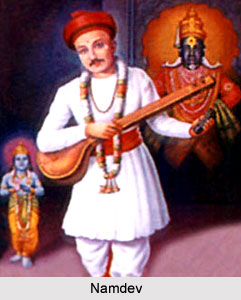 From the times of Dnyaneshwar and Namdev till the seventeenth century, Maharashtra saw the decline of the Yadav dynasty and the emergence of Muslim rule. The new Muslim rulers consolidated their political and military domination for the next three centuries. During this period, Maharashtra`s cultural and spiritual integrity was sustained by the teachings of Dnyaneshwar, Namdev, Eknath and other poet-saints of the Varkari movement. The sound understanding of Hindu doctrines was spread throughout the population through the works of these poets and provided the necessary protection against the Muslim rule. The naturalness of their poetry, philosophical message, and simplicity made it convenient for oral discourses among the masses.
From the times of Dnyaneshwar and Namdev till the seventeenth century, Maharashtra saw the decline of the Yadav dynasty and the emergence of Muslim rule. The new Muslim rulers consolidated their political and military domination for the next three centuries. During this period, Maharashtra`s cultural and spiritual integrity was sustained by the teachings of Dnyaneshwar, Namdev, Eknath and other poet-saints of the Varkari movement. The sound understanding of Hindu doctrines was spread throughout the population through the works of these poets and provided the necessary protection against the Muslim rule. The naturalness of their poetry, philosophical message, and simplicity made it convenient for oral discourses among the masses.
In the first half of the seventeenth century the poetic works of Tukaram posed a strong cultural challenge. For three centuries, Muslim rulers became more oppressive, the caste system became more rigid, and the society became more divided. Tukaram`s `Gatha` exposed the hypocrisy of the contemporary religious leaders and opened the minds of common people to the deeper meanings of their life and to the path toward self-realization.
A new phase emerged in the history of Maharashtra with the rise of Chatrapati Shivaji (1627-80) and his successful efforts to forge a Maratha nation. During Shivaji`s times, Ramdas (1608-81), a poet-saint, came to prominence. He did not belong to the Varkari movement. His work is different from that of other writers in Varkari tradition in that he provides a strong radical expression to Hindu nationalism as a means of protection against the Muslim rule. The area of political affairs was renounced by the Varkaris because it would draw one into an arena of useless conflicts and tempt one to pursue fame, adulation, and power. Ramdas, on the other hand, advocated the unity of Marathas to propagate Maharashtra dharma.
An important point here is that the change in socio-political conditions, with Shivaji`s rule, is reflected in the literary works of the period. In that sense, Tukaram and Ramdas can be perceived as "organic intellectuals" of their times, attempting to maintain cultural influence of intellectuals while introducing their ideas in the basic processes of social transformation. It is also important to bear in mind that the oral tradition and simplicity of the poetry, simple ovees (songs) sung by women while doing their household work, the spiritual songs- bhajans, abhangas, and shlokas- and the powadas, or ballads, describing real and mythical battles and conquests, facilitated the commonsense understanding of the times.
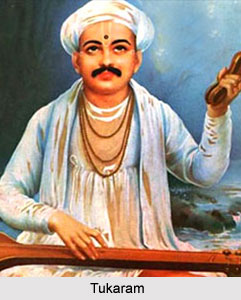 During this period, prose did not develop beyond the form of `bakhar` which was used to record accounts of battles and administrative and political orders and events. These bakhars provide us with contemporary accounts of the times in clear and precise terms. This form flourished later during the times of the Peshwas.
During this period, prose did not develop beyond the form of `bakhar` which was used to record accounts of battles and administrative and political orders and events. These bakhars provide us with contemporary accounts of the times in clear and precise terms. This form flourished later during the times of the Peshwas.
After the death of Shivaji in 1680 a period of social and political turmoil followed in Maharashtra. The followers of Ramdas did little new writing on their own and satisfied themselves in either copying or idolizing the work of their guru. On the other hand, the Varkari movement continued to maintain its appeal to the masses and retained its creativity. During this period, akhyan kavya, a form of poetry started by Eknath, flourished. Wamanpandit (1608-95), a contemporary of Ramdas, wrote translations of Sanskrit classics. He was notable for his command over language, philosophical erudition, and conscious literary artistry. This marks the resurgence of academic works emphasizing knowledge rather than inspiration and emergence of the elitist impulses in literature focusing on form and nuances untarnished by the social and political disquiet of the times.
The death of Aurangzeb, the last of the powerful Mughal emperors, in 1707, provided the Maratha kingdom with much needed respite from the continuous struggle to maintain the integrity of its freedom. A sense of security and stability that began to spread throughout the kingdom was also accompanied by the tendencies to expand geographically. The Maratha power, wielded by the Brahmin peshwa (prime ministers) was initially in the name of Shahu Maharaj and later almost independently, became a dominant force on the subcontinent. This political and military domination brought an era of relative prosperity in Maharashtra. Pune became the centre of learning, culture, colourful social life, and political power. Moropant (1729-93) is the dominant poet of this period, representing the tradition of Eknath, Wamanpandit, and Raghunathpandit. He read verse stories from the Indian Puranas (ancient texts) in temples, explaining them to lay audiences. The emphasis was on keeping the audience attracted through a clear narration adorned with poetic style, craftsmanship, and lyricism.
The expansion of the empire and the rise of the peshawas gave boost to the powadas. The balladeers sang about the military exploits and tragedies of the Maratha warriors. These powadas were sung before a variety of gatherings from courts to the villages. If powadas presented the heroism and exploits of Maratha soldiers on the battlefields, Lavani (romantic songs) gave expression to their love of sensual pleasure. Both these forms, popular even today, have a genuine folk flavor reflecting the speech and rhythms of the masses.
Marathi Literature in Early Nineteenth century
Marathi literature in the early nineteenth century underwent a major change with the advent of the British. There were a number of political as well as social changes that were sweeping through the country at this time and Maharashtra was no exception. The British were slowly gaining in power, taking advantage of the political disintegration within the country and had taken over the trade as well as other administrative functions of the country in their hands. They began to re-constitute India to consolidate their hold over the subcontinent and establish an administrative structure that could be run with the willing cooperation of Indians. To achieve this objective it was felt necessary to educate the Indians so as to create a class of individuals who would form a link between the rulers and the ruled. To impart education, books written in English and Marathi language became necessary. The British officers felt it necessary to learn Indian languages for communication and effective control of administration, for which they employed the services of Indian scholars as language teachers.
American and Scottish missionaries were the other group interested in learning Indian languages to spread Christianity, which relies heavily on the teachings in the Bible. This necessitated translation, as well as knowledge, of Indian languages. William Carey, a professor at the Fort Williams College in Kolkata, played an important role in preparation of a grammar and dictionary of Marathi. The language and style of books produced by the British differed markedly from the prose works written by the Marathi authors at the time or earlier. There was a clear departure from earlier traditions in Marathi literature. The language took on the English form with a new diction and syntax. The introduction of the printing press, establishment of schools and colleges, and school textbook production contributed to the objectives of the colonisers. The emphasis on written form and reading skills once again put the upper castes in a relatively advantageous position vis-a-vis new rulers. The standardization of both the written and spoken form of Marathi language by the British put Devanagari as a script and a variety of Marathi spoken in and around Pune by educated people in dominant positions.
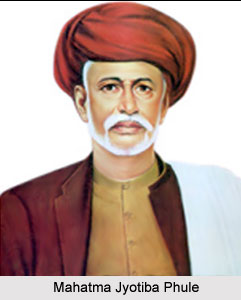 With the advent of printing technology, the Maharashtrians now started to explore newer possibilities in the changed context of society and state. The periodicals in English provided a useful model for the educated Maharashtrians and an opportunity to revive interest in older Marathi poetry and other classics. Along with literary periodicals, there were other periodicals countering the attacks of the missionaries on Hinduism. While upper-caste, educated Hindus were countering the missionaries, through writings on social, political, religious, and philosophical issues, they were also translating literary works from English. Printing technology and education enabled the non-Brahmins to forge alliances with the reformist elements among the Brahmins and later pave an independent path to reject the caste system. The revolutionary work of Mahatma Jyotiba Phule (1827-90) in educating women and persons from lower castes is important in this period. Hari Deshmukh (1823-92) was an important reformist writer of this period. Through his contribution to the weekly Prabhakar, he criticized the superstition, idleness, and ignorance widespread in Maharashtra of his times and extolled the virtues of the British, namely, learning, efficiency, industriousness, and scientific knowledge.
With the advent of printing technology, the Maharashtrians now started to explore newer possibilities in the changed context of society and state. The periodicals in English provided a useful model for the educated Maharashtrians and an opportunity to revive interest in older Marathi poetry and other classics. Along with literary periodicals, there were other periodicals countering the attacks of the missionaries on Hinduism. While upper-caste, educated Hindus were countering the missionaries, through writings on social, political, religious, and philosophical issues, they were also translating literary works from English. Printing technology and education enabled the non-Brahmins to forge alliances with the reformist elements among the Brahmins and later pave an independent path to reject the caste system. The revolutionary work of Mahatma Jyotiba Phule (1827-90) in educating women and persons from lower castes is important in this period. Hari Deshmukh (1823-92) was an important reformist writer of this period. Through his contribution to the weekly Prabhakar, he criticized the superstition, idleness, and ignorance widespread in Maharashtra of his times and extolled the virtues of the British, namely, learning, efficiency, industriousness, and scientific knowledge.
The emergence of new forms of fiction, especially the novel, is attributed to political domination by the British, English education, and exposure to Western literature through English, as well as several indigenous narrative traditions that survived through constant change. It is interesting to note that the word `Kadambari` is used for novel in Marathi, acknowledging Banabhatta`s literary work in Sanskrit as the first of its kind in this genre.
Three distinct kinds of prose works can be identified in Marathi literature of the nineteenth century, especially the novel. The first type is exemplified by Baba Padamanji`s `Yamuna Paryatana` (1857). Padamanji, a convert to Christianity, represents reformist impulses in a functional way. The second is represented by Lakshman Halbe`s Muktamala (1861), denoting the imaginative-romantic urge. The third type is exemplified by R. B. Gunjikari`s `Mochanagad` (1871), incorporating the revivalist-historical spirit. The story of Mochanagad, for example, is set in a hill fort in Maharashtra. Shivaji`s capture of the fort and the lives of imaginary characters enable the author to weave a happy, romantic tale. This pattern has been repeated since to depict Maratha history.
The one literary form that managed to remain unchanged and stayed outside the sphere of influence of the British at the time was drama. Early Marathi drama retained its basis in Sanskrit or folk forms for some time. But dramas, along with periodicals, provided an effective means to resist the influence of the missionaries and infuse a new spirit of self-respect. As the first few generations graduated from colleges, the impact of, and exposure to, English literature was evident.
Marathi Literature in Late Nineteenth Century
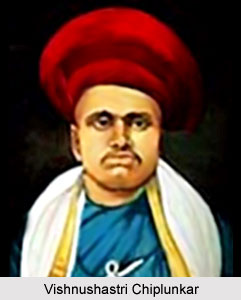 Marathi literature in the late nineteenth century was a mix of several factors that were moulding the life of the Indian people. The period between the demise of the peshwa rule, establishment of the British administration, and 1874 was characterized by a strange mix of strength and vulnerability. A number of changes had been brought in the life of the Indian people which forced them to reconsider their earlier convictions and social customs. There was an increasing spread of periodicals, the introduction of a new educational system which comprised English and the spread of Western social, economic, and political thoughts. The new class of educated people, exposed to Western ideas, began to see the problems and limitations of traditional social structure and relations. The initial attempts at social change had brought about and exposed new cleavages in the society: orthodox and reformist, educated and uneducated, Brahmin and non-Brahmin, rulers and the ruled. All these factors went into determining the literature of the late nineteenth century.
Marathi literature in the late nineteenth century was a mix of several factors that were moulding the life of the Indian people. The period between the demise of the peshwa rule, establishment of the British administration, and 1874 was characterized by a strange mix of strength and vulnerability. A number of changes had been brought in the life of the Indian people which forced them to reconsider their earlier convictions and social customs. There was an increasing spread of periodicals, the introduction of a new educational system which comprised English and the spread of Western social, economic, and political thoughts. The new class of educated people, exposed to Western ideas, began to see the problems and limitations of traditional social structure and relations. The initial attempts at social change had brought about and exposed new cleavages in the society: orthodox and reformist, educated and uneducated, Brahmin and non-Brahmin, rulers and the ruled. All these factors went into determining the literature of the late nineteenth century.
One of the most significant factors during this time was the influence of Vishnushastri Chiplunkar. The son of an eminent scholar, he went on to start his own periodical, `Nibandhamala` in 1874. Through the medium of this publication he sought to educate and galvanise the people by highlighting the various social and political problems of the time. He represented the conservative reaction to reformist tendencies and in his works he attacked the educated people who displayed a subservient attitude towards the British rule. He brought precision, refinement, polish, ease, and compact writing style to the Marathi language. He even started his own printing press, a publishing house and periodicals-a magazine and two newspapers, Kesari (in Marathi) and Maratha (in English). Chiplunkar went on to make a significant contribution to the literary and intrellectual spheres in Marathi.
Another important division that emerged in Maharashtra during the last decade of the nineteenth century was about the objectives of the nationalist movement. Gopal Ganesh Agarkar (1856-95), a colleague of Chiplunkar and Tilak, argued, along with Mahadev Govind Ranade (1842-1901), that social emancipation should take place before the struggle for political freedom was launched. Their liberal views on social and cultural renaissance were at odds with those of Chiplunkar and Tilak. Agarkar broke away from the Kesari organization dominated by Tilak to start his own periodical, `Sudharak`, in 1887. His lucid and rational views on social issues, his humanism, and his deep understanding of historical processes left a profound mark on the middle class and higher castes.
Prose in Late Nineteenth Century
The intellectual turmoil and social change made a deep impression on literature of the period. At the same time, developments in literature reflected and contributed to the process of change under way and mirrored different tendencies manifested during this period. Hari Narayan Apte (1864-1919), the first major Marathi novelist, wrote his first novel, `Madhali Sthiti`, in 1885. It is an adaptation of W. M. Reynold`s `Mysteries of London`. In his novel, Apte depicts the paradox of Western concepts of modernity and the corruption of orthodoxy in the Pune of his times. The title of the novel has been explained as "state of middle classes" or "the transitional stage" In it, Agarkar`s influence, his spirit of social reform, is clearly visible.
His "Pan Lakshyat Kon Gheto?"(1890) blends realism and idealism to trace the life of Yamuna, the narrator, from childhood to maturity. Though clearly a tragedy of Yamuna`s life, it is also an attempt to show the efforts to change women`s lives through education. In this 700-page story, the first-person narrative is used to ensure genuineness. Through a conscious effort, Apte develops the narrative in a halting, recursive style to indicate the limited verbal resources of an uneducated and unsophisticated girl. As the character grows older, she is ready to discuss social conditions and social injustices facing women.
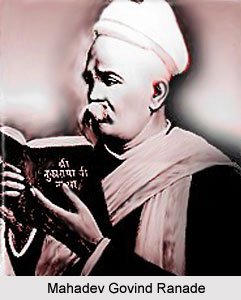 The differences in the social surroundings of Mumbai and Pune also outline the contradictions of middle-class Marathi life. Mumbai represents, in the novel, a world of social freedom, revival, and individualism while Pune is an orthodox and closed community. Yamuna moves to Mumbai with her husband for two years. Those are the two happy years of her life. There she experiences being herself, away from the constant scrutiny and deception of her joint family in Pune. Through this novel, Apte depicts the subtle inter-mixing of the social and the individual in nineteenth-century Maharashtra, caught up in Brahmin orthodoxy and reform movements.
The differences in the social surroundings of Mumbai and Pune also outline the contradictions of middle-class Marathi life. Mumbai represents, in the novel, a world of social freedom, revival, and individualism while Pune is an orthodox and closed community. Yamuna moves to Mumbai with her husband for two years. Those are the two happy years of her life. There she experiences being herself, away from the constant scrutiny and deception of her joint family in Pune. Through this novel, Apte depicts the subtle inter-mixing of the social and the individual in nineteenth-century Maharashtra, caught up in Brahmin orthodoxy and reform movements.
Apte`s other novels, like `Ganapatrao` (1883), `Mee` (1893-95), and `Jag He Ase Aahe (1897-99),` show his maturity as a novelist attempting to react, reflect, and record the changing social and political environment of Maharashtra. His contribution to the development of the historical novel in Marathi is equally significant. The educated middle class was showing an interest in the history of Maharashtra. It was the reaction of a people who had lost power and had yet to learn to deal with it. As the educated class learned how the Maratha Empire was defeated, it was necessary to restore its will to power. The emergent nationalist ideology helped in the reinterpretation of the history. Apte`s historical novels need to be examined in this context. His first historical novel, `Mysoracha Wagh` (1890), was a shoddy adaptation of an English novel by Meadows Taylor on Tipu Sultan. His Ushakkal (1896) matches the merit of his social novels.
Apte develops splendid images of life during the Maratha period. Since the historical materials relating to the period were yet to be organized, he relied on folklore, legends, gossip, and whatever factual material was available to him to develop the culture of those times. His Ushakkal is distinct as a historical novel in that it depicts a touching picture of the traditional values and norms dominating the lives of an older generation of the Deshmukh family. It also portrays the picture of a younger, idealistic generation with new ideas of self-respect, freedom, and loyalty within that same family. This inter-generational struggle within the family surpasses the intensity of clashes between the Muslims and the Marathas.
Other novelists of the time did not match Apte in his craftsmanship, style, and social consciousness. K. R. Mitra (1871-1920) stands out for his translations of Bengali novels and stories in Marathi. He successfully introduced the gentle emotionalism of Bengali works in Marathi. It was a new element that enriched Marathi fiction. It is also an indication of the process of development of "national" consciousness which was now under way.
Poetry in Late Nineteenth Century
Marathi poetry of the time was liberated from the domination of Sanskrit poetics and the orthodoxy of the Marathi pandit poets of the seventeenth and eighteenth centuries. K. K. Damle, Keshavsut (1866-1905), the son of an ill-paid schoolteacher with a large family, is the one who opened new horizons for Marathi poetry. A contemporary of Hari Narayan Apte, he, too, was influenced by Agarkar`s passion for social reform. His early poetry was influenced by the style and imagery of Sanskrit poetry. As he encountered English poetry, his own work began to reflect new style, words, and expressions. He began to blend the shloka structure in Marathi to the ode. Later, he also experimented with the sonnet and other forms to suit the expression. He was influenced by the English romantic poets, especially Wordsworth. This influence is to be seen in his choice of words, his ability to express his intense feelings as he experienced them and to look at the world from his own perspective. This subjective element was new to Marathi poetry. It is also a reflection of a society that was moving away from group consciousness and identity to a more individualized, self-centered identity. A new awareness of the presence of nature was being expressed in a simple and contemplative manner without resorting to stylized imagery and details. His poems like "Pushpaprat," "Satareeche Bol," "Nairutyekadil Waryas," and "Ek Khede" exhibit these qualities. The other side of his poetry reflects reformist impulses. He felt an urgent need for social reform and for equality among men. His call to action is expressed in his poems like "Tutari" and "Nava Shipai."
If Keshavsut was breaking the molds of traditional poetry, his contemporaries followed different paths. Narayan W. Tilak (1862-1919) was a deeply religious person who rejected Hindu religious orthodoxy and wrote against social injustices, echoing his faith in God and humanity. Vinayak J. Karandikar`s (1872-1909) poetry represents the conservative, romantic reaction rejoicing in the glory of Maratha and Rajput history. As the nationalist movement became stronger, his sentiments enjoyed a wide appeal in Maharashtra. Ram Ganesh Gadkari, (Govindagraj) (1885-1919), T. B. Thombre, )Balakavi) (1890-1918), and Narayan M. Gupte, (Bee) (1872-1947), were other prominent poets of the period, but they did not necessarily follow the lead of Keshavsut.
Drama in Late Nineteenth Century
Between 1885 and 1920, Marathi theatre gained respectability, popularity, and maturity. From the early unscripted plays of Vishnudas Bhave in Sangli through translations and adaptations of Sanskrit and English plays, Marathi drama began to adapt to the new needs and times. The adaptations were now oriented toward performance and were influenced by commercial considerations. Govind Ballal Deval`s (1855-1916) Sharada (1899) is his only original play that truly reflects the concerns of his times. Child marriage, especially very young girls marrying old men, was a burning issue at the time. Sharada uses this issue as its theme not only to criticize this practice and advocate social reform but also to paint a touching picture of the girl`s plight. Deval`s translations of Shakespeare`s Othello as `Zunzarrao` and Moliere`s Sganarelle as `Sanshayakallol` remained popular for a long time.
Shripad Krishna Kolhatkar`s (1871-1934) versatility as a humorist, essayist, novelist, critic, and playwright is commonly acknowledged by critics. His `Mookanayak` (1897) and `Mativikar` (1906) deal with social problems like drinking and widow marriage, but their popularity owed more to music and wit than to the themes. K. P. Khadilkar (1872-1948) was another successful playwright who skillfully blended theme, music, and dialogue in his plays. His `Sawai Madhavravacha Mrutyu` (1893) is a historical play, while `Kichakavadha` (1907) is an adaptation from a story in Mahabharata. The play gained publicity because of the ban by the British. It was argued that the villain of the play resembled Lord Curzon. His Bhaubandaki (1909) uses an episode in history to comment on the rift between the moderate and radical factions at the Surat session of the Indian National Congress. Ram Ganesh Gadkari`s `Ekach Pyala` (1919) and `Bhavabandhan` (1920) were popular for decades for their dialogues, songs, and humor. Marathi theater was already under the control of producers, who were able to assert their will on the playwrights to ensure commercial success.
Thus Marathi literature of the late nineteenth century, as is evident from the above discussion, was mainly a product of the political and intellectual turmoil of the time.
Modernism in Marathi Literature
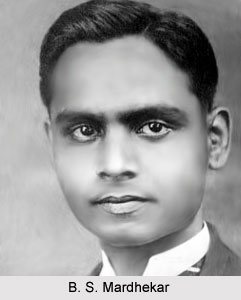 Modernism in Marathi Literature is most distinctly seen in the poetry written during the time. B. S. Mardhekar (1909-56) is recognized as the originator of the "modernist" trend in Marathi literature. His early poetry was along the lines of the works of Ravikiran Mandal and Balkavi Thombre. His initial collection of poems, Shishiragama (1939), reflects those influences. However, in 1947, he published his second volume, `Kahi Kavita`, which changed the tone of Marathi poetry. In this collection, he expresses the disappointment, irony, and strangeness of human life in contemporary society. He says that as the society undergoes a change, the earlier established structures, kinds of relationships and interactions also go through changes. However, what is strange to note here is that in the period during which he wrote, there was no noticeable degradation of human life in India than before. Development of science, technology, and industry remained vague and restricted. The capitalist mode of production was not yet the dominant one. The de-humanization, disillusionment, and uncertainties that he expresses through this volume are more reflective of the postwar European situation. This is not to suggest that conditions in Maharashtra or in India were better. It is felt that the impact of the West, especially, the example of T. S. Eliot and Ezra Pound and the modern European attitude of mocking cynicism shaped his poetic sensibility.
Modernism in Marathi Literature is most distinctly seen in the poetry written during the time. B. S. Mardhekar (1909-56) is recognized as the originator of the "modernist" trend in Marathi literature. His early poetry was along the lines of the works of Ravikiran Mandal and Balkavi Thombre. His initial collection of poems, Shishiragama (1939), reflects those influences. However, in 1947, he published his second volume, `Kahi Kavita`, which changed the tone of Marathi poetry. In this collection, he expresses the disappointment, irony, and strangeness of human life in contemporary society. He says that as the society undergoes a change, the earlier established structures, kinds of relationships and interactions also go through changes. However, what is strange to note here is that in the period during which he wrote, there was no noticeable degradation of human life in India than before. Development of science, technology, and industry remained vague and restricted. The capitalist mode of production was not yet the dominant one. The de-humanization, disillusionment, and uncertainties that he expresses through this volume are more reflective of the postwar European situation. This is not to suggest that conditions in Maharashtra or in India were better. It is felt that the impact of the West, especially, the example of T. S. Eliot and Ezra Pound and the modern European attitude of mocking cynicism shaped his poetic sensibility.
In the work `Anakhi Kahi Kavita` (1951), there can be seen a conscious attempt to go beyond human poverty. Efforts are made to bring together the Western values imbibed through education and the spiritual discourse of the native saints. Even in his turn to the spiritual understanding of the modern world, he seems to hang on to the rationalist approach. He strove for precision of expression in his poetry. Mardhekar`s poetry did not create a tradition in Marathi poetry, but it certainly changed its direction and form. It also marked a decline of romantic-humanist tradition in Marathi poetry.
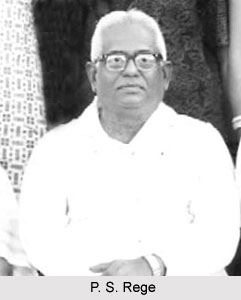 P. S. Rege (1910-78) is acknowledged as an important poet of contemporary Marathi poetry. He, along with Mardhekar and Muktibodh, is credited for revival of poetry in the post-colonial period. Yet, his approach to poetry is quite different from that of the other two. He is more focused with form, style, rhythm, lyricism, and sensual expression. His poetry avoids the dimensions of time and space. Thus it is held that there was a very strong private element in his poetry. He published his first collection of poems, Sadhana am Itar Kavita, in 1931. Himaseka (1943) is acknowledged as his first major collection. There is a constant theme which seems to haunt his imagination, and that is of a woman in love. He feels that feminity embodies the essence of love that goes beyond time and event. His later collections of poetry include Dusara Pakshi (1966), Priyala (1972), and Suhrudgatha (1975). He also wrote three novels, two volumes of essays and literary criticism, and several plays.
P. S. Rege (1910-78) is acknowledged as an important poet of contemporary Marathi poetry. He, along with Mardhekar and Muktibodh, is credited for revival of poetry in the post-colonial period. Yet, his approach to poetry is quite different from that of the other two. He is more focused with form, style, rhythm, lyricism, and sensual expression. His poetry avoids the dimensions of time and space. Thus it is held that there was a very strong private element in his poetry. He published his first collection of poems, Sadhana am Itar Kavita, in 1931. Himaseka (1943) is acknowledged as his first major collection. There is a constant theme which seems to haunt his imagination, and that is of a woman in love. He feels that feminity embodies the essence of love that goes beyond time and event. His later collections of poetry include Dusara Pakshi (1966), Priyala (1972), and Suhrudgatha (1975). He also wrote three novels, two volumes of essays and literary criticism, and several plays.
Govind V. Karandikar (1918) started along the path paved by Keshavsut, Madhav Julian, and Savarkar but later turned to Mardhekar and Rege for inspiration (Deshpande and Rajadhyaksha 1988). His Mrudgandha (1954) and Dhrupada (1959) brought him recognition as an innovative poet.
Sharatchandra Muktibodh`s (1921-84) work was also influential in determining the modernist trend in Marathi poetry. It is influenced by Marxist ideas. He, too, confronts modern society, but his work projects a clarity and resolve to bring about social justice to all people. There is a conviction of inherent human abilities and creativity, as well as an awareness of contradictions and inequalities of modern industrial societies. His first volume of poetry, Navi Malawat (1949), attracted attention because of the expression of genuine social commitment and concern for the exploited classes of the industrial age. Yatrik (1957), his next collection, continued along the same path, revealing the pretensions of the middle class. His poetry upset those segments of the middle class who were comforted by the conformist poetry of Tambe and the Ravikiran Mandal.
It is noteworthy that his poetry, in spite of its explicit and genuine concern for the working classes, is not blaring. It is vivid, sensitive, intelligent, and imaginative. The recurring images of fire in his poetry denote both the destruction of the oppressive and exploitative social order and resurrection of a just society. His trilogy of novels began with Kshipra in 1954 and followed with Haddapar and Jan He Voltu Jethe. The characters in the trilogy are involved in the Quit India movement in 1942. The intellectual journey of the main character, Bishu, in search of an organized framework to understand social contradictions, enables Muktibodh to provide bold interpretation of social changes while reflecting on the interaction of individual and society.
Vasant Bapat`s (1922) poetry reveals his early association with a socialist organization. His patriotic songs charmed the youth of Maharashtra during the Quit India movement in 1942. His first collection, Bijali (1952), was followed by Setu (1957), Akravi Disha (1962), Sainya Chalale Pudhe (1965), Sakina (1975), Manasi (1977), and Pravasachya Kavita (1982). His poetry shows his sustained development and maturity as a poet.
Thus discussed above is the influence of modernism on Marathi literary works, especially poetry.
 Marathi literature is said to have begun in the thirteenth century with the writing of Sri Krishna Charitra by the poet Bhaskar. The modern period begins with the advent of the English and introduction of the Western system of education. In the pre mutiny period there was an initial development of the Marathi language on account of the liberal policy of Elphinstone who believed in the encouragement of Vernacular literature together with the English language.
Marathi literature is said to have begun in the thirteenth century with the writing of Sri Krishna Charitra by the poet Bhaskar. The modern period begins with the advent of the English and introduction of the Western system of education. In the pre mutiny period there was an initial development of the Marathi language on account of the liberal policy of Elphinstone who believed in the encouragement of Vernacular literature together with the English language.
Modern Marathi Poetry
During this early period there were number of notable writers in Mumbai and Pune. Sri Janbhekar established `Sahitya Mandal` in Bombay and various monthlies were floated. Other writers were Kashinath, Sadashiva, Rao Sahib Mandalik and Dadoba Pandurang. In Poona new literature was written by Sri Krishna Shastri Chiplunkar and Lokhitwadi. Dictionaries and grammars were also prepared. In the next period from 1876 A.D. to 1943 A.D. there was a great creative development of Marathi literature. Two schools of thought arose, one classical and revivalist, another modern and assimilative. The former school in poetry was represented by Vishnushastri Chiplunkar with his writings in the monthly journal like `Nibandhmala,` Parashram Tatya and many others. The modernist school was represented by Keshava Sut later followed by Ram Chandra Pradhan and Vishnu Moreshwar among others.
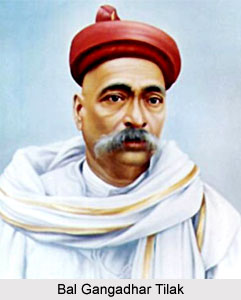 Bal Gangadhar Tilak and Veer Savarkar were the representatives of the classical school of poetry. Tilak described nature very well while Savarkar specialised in patriotic poems. His poems like Maharashtra Lakshmi and Hatbhagini vividly bring out his patriotic fervour. Chandra Shekhar was the greatest Marathi poet who wrote in the classical style of Jagannath and Jaydev. Other poets of this school were Parkhi, Chintamani, Majumdar and Madhavanuj.
Bal Gangadhar Tilak and Veer Savarkar were the representatives of the classical school of poetry. Tilak described nature very well while Savarkar specialised in patriotic poems. His poems like Maharashtra Lakshmi and Hatbhagini vividly bring out his patriotic fervour. Chandra Shekhar was the greatest Marathi poet who wrote in the classical style of Jagannath and Jaydev. Other poets of this school were Parkhi, Chintamani, Majumdar and Madhavanuj.
Keshvasuta was the modernist among the poets. He was looked upon as the father of modern Marathi poetry. He had his followers in Ram Ganesh Gadkari, Rendalkar, Nagesh, Keshavakumar and Sonalkar. Lyricism was the key-note of these poets. His poetry is a synthesis of music, word-painting and romanticism. Love was the constant theme. Narain Murlidhar Gupta wrote didactic and philosophical poems. Madhava wrote on historical topics and his poetry is very inspiring. After the first Great War new poets like Keshava Mahadeva, Tiwari Trambuk Bapuji, Thonbare, Anarid Rao Tekane, Madhava Trambak Patwardhan and others came to limelight. The modern Marathi poetry deals mainly with love, description of nature and female beauty.
Modern Marathi Drama
Drama has also made a noteworthy progress. Sri B. P Kirolskar was the father oœ the modern Marathi drama. His famous dramas are Vikrama Charitra, Shakuntala, Soubhadra and Ram Rajya Viyoga. Deval was the next representative dramatist. He was followed by Kolhatkar and Khadilkar. He wrote operas, prose-dramas and adapted English dramas to the Marathi stage. His famous dramas are death of Madhava Rao, Kichakvadha, Premdhwaj. Among the next best writers we have N. C. Kelkar, Khare, Vaman Rao Joshi and Atre. More than 1200 dramas have so far been written in Marathi Language.
Modern Marathi Prose
The first stories were translations from Sanskrit and European literatures. The father of the modem story was H. B. Apte. He was followed by Sahkari Krishna. The monthly `Manoranjan` which published stories of the budding writers started during this time. Among the famous story writers there are Gurjar, Gokhale, N. H. Apte, Deshpande and Saraswati Kumar. Kolhatkar resembles the Russian writers in his realism. There were women-writers like Girja Bai Kelkar, Kashitai and Anandi Bai.
Among the novelists the first great name is that of Han Narayan Apte who started writing his novels in the last two decades of the 19th century. H. N. Apte was the Walter Scott of Marathi literature. His first novel `Aj Kal Chya Goshti` was a realistic picture of the contemporary scene. Later on came the political novels like Bhavanand. His most important historical novels are Ushakal, Suryodaya, Suryagrahana, Gad Ala Pan Singh Geb, Rup Nagar Chi Kanya and Madhyanha.
Professor Vaman Malhar Joshi with his first novel `Ragini` satisfied the new taste of the public. His works show a psychological insight and portray the contemporary political and social problems. Among the recent novelists the most famous are Phadke, Ketkar, Khandekar, Madkholkar and P. Y. Deshpande and many more. The recent trend is towards socialism and psycho-analysis.
Marathi literature has made considerable progress in humorous writings. Among the famous humorous writers there are Kolhatkar, Atre, Gadkiri and Prof. Chintamani Vinayak Joshi. Juvenile literature has greatly developed in Marathi.
There has been an all-round development in Marathi literature. It has been affected by the literary trends in the West and in Bengal and like other Indian literatures its most recent phase is that of morbidity, realism and frustration.
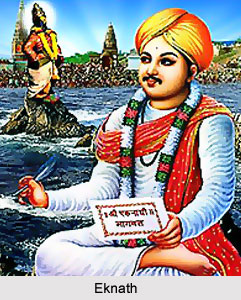 Renaissance in Modern Marathi Literature gets reflected through the different literary works including prose, fiction, poetry and drama. Marathi language is referred to as one of the Prakrit language. The first Marathi poet, Mukunderaj, lived between 1128 and 1298 A.D. Early Marathi literature is considered as mostly devotional and four great saint-poets are remembered as the stalwarts - Sant Jnaneshwar (1271-1296), Eknath (1533-1599), Tukaram (1608-1649) and Ramdas (1608-1681). The medieval Marathi literature is full of Pandit-poets like Vamanpandit and Moropant.
Renaissance in Modern Marathi Literature gets reflected through the different literary works including prose, fiction, poetry and drama. Marathi language is referred to as one of the Prakrit language. The first Marathi poet, Mukunderaj, lived between 1128 and 1298 A.D. Early Marathi literature is considered as mostly devotional and four great saint-poets are remembered as the stalwarts - Sant Jnaneshwar (1271-1296), Eknath (1533-1599), Tukaram (1608-1649) and Ramdas (1608-1681). The medieval Marathi literature is full of Pandit-poets like Vamanpandit and Moropant.
The modern period in Marathi literature started with the missionaries, who established printing presses and brought prose in printed form into trend. In the year 1808, the first Marathi printed work appeared and further in the year 1834 the first Marathi newspaper, Darpana, was published. First Marathi Literary Institution was established in 1848. Most of the nineteenth century prose and poetry of Marathi literature is polemical and instructive. The first Marathi novel written by Baba Padmanji was published in 1857. The so called `New Age` in Marathi literature started with the nationalistic poet, Keshava Suta (1866-1905) and novelist Hari Narayana Apte (1864-1919). They were the .pioneers of a literary renaissance in Marathi literature.
Poetry in Marathi Literature
The romantic upsurge in poetry was expressed in the nature-poetry of preacher N.V. Tilak (1865-1919) and the love-poems and passionate plays of R.G. Gadkari (1885-1919); in the simple and impulsive lyricism of Balkavi (1890-1918) and the philosophic compositions of Bee (1872-1947) and Tambe (1874-1941) borrowed some symbols and images from Tagore. The `Ravikiran Mandal`, a group of seven poets, dominated a part of modern Marathi literature and they stated that poetry was not for the well-educated instead it was a part of everyday life. A reaction came in the form of progressive poets like Anant Kanekar, who in his only collection of poetry in 1933 underlined class-struggle. He was one of the most articulate advocates of cultural freedom. Later poets like Vinda Karandikar and Sharach-Chandra Muktibodh followed the trail and wrote poetry which revolutionised the themes. Poetry of Kusumagraj and Vasant Bapat reflect socialist causes.
Drama in Marathi Literature
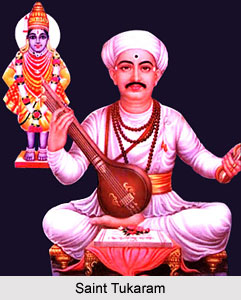 While poetry is becoming more and more unintelligible, drama continues to thrive and maintain its rich tradition. Marathi stage was born in 1843 and has an illustrious line of great dramatists. Vaatak translated Bjornson`s `The Gauntlet` in 1933 and with Rangnekar and P. K. Atre, a new school of drama used as a form of social satire started. Both playwrights of immense popularity, Atre and Rangnekar, however, did not raise the literary standard of Marathi drama. Further, there has been a new realisation of writing psycho-analytical plays meant for the new stage. P. L Deshpande, Vijay Tendulkar and Vasant Keretkar experimented in reviving the stage with the very significant contribution of creating new round characters instead of mere flat monochrome `types`, in handling situations of social helplessness and frustration with an underlying streak of comedy and satire, and in reviving historical plays without their old insistence on sabre-rattling and clap-trap trick scenes and thundering speeches. Maharashtra has some very great stage talent. Meanwhile, there has been a very meaningful upsurge of the folk-drama forms such as Tamasha and plays in dialects. The folk medium is largely used for various purposes like political propaganda, social reform and even sheer entertainment. But the rural stage has its limitations. Very little has been done to combine the folk-drama form and idiom with a modernised content. However, some writers are trying to fill the gap between the city and the village in short-stories and fiction, drama is still wavering between the two pulls of sophisticated depth, psychology and broadsides with bawdy humour pleasing the common illiterate playgoer.
While poetry is becoming more and more unintelligible, drama continues to thrive and maintain its rich tradition. Marathi stage was born in 1843 and has an illustrious line of great dramatists. Vaatak translated Bjornson`s `The Gauntlet` in 1933 and with Rangnekar and P. K. Atre, a new school of drama used as a form of social satire started. Both playwrights of immense popularity, Atre and Rangnekar, however, did not raise the literary standard of Marathi drama. Further, there has been a new realisation of writing psycho-analytical plays meant for the new stage. P. L Deshpande, Vijay Tendulkar and Vasant Keretkar experimented in reviving the stage with the very significant contribution of creating new round characters instead of mere flat monochrome `types`, in handling situations of social helplessness and frustration with an underlying streak of comedy and satire, and in reviving historical plays without their old insistence on sabre-rattling and clap-trap trick scenes and thundering speeches. Maharashtra has some very great stage talent. Meanwhile, there has been a very meaningful upsurge of the folk-drama forms such as Tamasha and plays in dialects. The folk medium is largely used for various purposes like political propaganda, social reform and even sheer entertainment. But the rural stage has its limitations. Very little has been done to combine the folk-drama form and idiom with a modernised content. However, some writers are trying to fill the gap between the city and the village in short-stories and fiction, drama is still wavering between the two pulls of sophisticated depth, psychology and broadsides with bawdy humour pleasing the common illiterate playgoer.
Fiction in Marathi Literature
Marathi novel and short stories have passed through all those stages of historical romance and social reform tracts to mere `art for art`s sake` entertainers. Lots of translations of western literature have been made. Then followed another significant group of four, who stand out for being different and renowned for short-stories are S. N. Pendse, Vyankatesha Madgulkar, Aravind Gokhale and P. B. Bhave. Bhave is a painter of prehistoric passions and wields a powerful pen. There are other younger short-story writers and one can find an oblique reference to modern events or happenings in the novels of contemporary writers. Biwalkar wrote a novel on Gandhi`s work; G.N. Dandekar wrote a novel on Bhakra-Nangal (Amhi Bhagirathache Putra), Phadke wrote a trilogy of novels on Subhas Bose and the Indian National Army. Contemporary younger novelists and short-story writers are more focussed on giving fine, objective, non-sentimental snap-shots of some regional culture or agony. The interest of the fiction-writer seems to be the futility of the human condition and a thin coating of humour does exist in their write-ups.
Belles-Lettres in Marathi Literature
Of late, travelogue has become one of the most popular literary forms for the Indian writers. In Marathi language too, excellent travelogues are written by Gangadhar Gadgil, Prabhakar Padhye, Anant Kanekar, R.B. Joshi, P.L. Deshpande and others. Late Kusumavati Deshpande wrote excellent personal essays and sketches. But now a new form which is a pleasant mixture of the prose-poem, reflective essay, reminiscence and epistolary writing has developed.
Marathi literature is noted for its intellectual pursuits. Lexicography and bibliographical work in Marathi language has several great names. Marathi has many works on useful arts and sciences, agriculture, architecture, law and medicine.
Marathi Literature During Indian National Movement
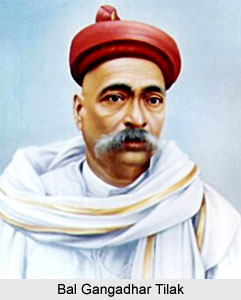 Marathi Literature during the Indian National Movement was the outcome as well as a motivating factor for the many social and political changes that were taking place at the time. One of the major influences on Marathi Literature during the Indian National Movement was Bal Gangadhar Tilak. The Marathi literature during the phase of the Indian National Movement can be better understood by taking a look at the various contending views that existed during this time. The death of Bal Gangadhar Tilak marked the end of an era in the history of Maharashtra. His conservative social views and radical nationalist politics had gone a long way in shaping the Maharashtrian society during that period. The nationalist discourse that he shaped created a "national consciousness" heavily influenced by scriptural or canonical authority. He did not subscribe to the progressive views or the liberal, secular and rational attitudes which looked towards the west for a model. Consequently the urban, educated middle class was unable to develop a broad social base for the national movement.
Marathi Literature during the Indian National Movement was the outcome as well as a motivating factor for the many social and political changes that were taking place at the time. One of the major influences on Marathi Literature during the Indian National Movement was Bal Gangadhar Tilak. The Marathi literature during the phase of the Indian National Movement can be better understood by taking a look at the various contending views that existed during this time. The death of Bal Gangadhar Tilak marked the end of an era in the history of Maharashtra. His conservative social views and radical nationalist politics had gone a long way in shaping the Maharashtrian society during that period. The nationalist discourse that he shaped created a "national consciousness" heavily influenced by scriptural or canonical authority. He did not subscribe to the progressive views or the liberal, secular and rational attitudes which looked towards the west for a model. Consequently the urban, educated middle class was unable to develop a broad social base for the national movement.
Following his death, the dichotomy of revivalist and reformist trends within the nationalist movement became fairly pronounced during this time. How to reach the goal of national independence, the methods, and the strategies became a contested terrain. A group among nationalists believed that as long as the British had an edge over the Indians in the development and application of science and technology, they would continue to set the standards in religion, cultures and politics. Those Indians who were close to the colonial rule and its reward system shared the values and aspirations of the Raj. To them, British rule in India was the first essential step toward a just, equal, and "modern" world.
On the other hand, the nationalist thinkers began to assert that backwardness is not something that is ingrained in the Indian culture. On the contrary it was a result of the subjugation of the Indians by attributes of "modernity" associated with the West. They called for a synthesis between the modernity of the west and the spirituality of the east as the path and this was the elitist program during the Nationalist struggle. The limitations of elitist politics were clear by the 1920s. The impact of the Bolshevik revolution and the appeal of Marxist views were quite widespread among the elite. During this time, Mahatma Gandhi was involved in manoeuvring a national political movement toward Independence.
Thus it was in this political and social environ that Marathi literature of the nationalist period flourished. It is possible to see in the literature of this period the contest between different ideologies to assert their supremacy. Gandhism did not influence the writers and their writings directly, but Mahatma Gandhi`s program for national reawakening struck a responsive note in Marathi literature, prominently in drama. Similarly, Marxist ideas also inspired many Marathi writers, but the mainstream of Marathi literature during this period remained under the sway of the urban, educated middle class. These various tendencies in the political and social life of Maharashtra are reflected in the literature of the period in different ways.
Prose in Marathi Literature
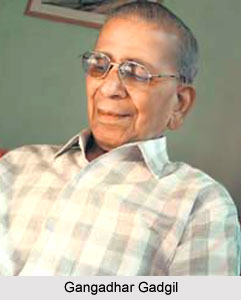 Prose in Marathi literature took a distinct turn in the twentieth century. Gangadhar Gadgil (1923), with Arvind Gokhale, Vyankatesh Madgulkar, and P. B. Bhave, ushered in what has been called the "new short story." The newness implied in the label refers to the return of realism. Gadgil led the charge against the false romantic-imaginary world exemplified in the works of Phadke and Khandekar. The de-humanizing industrial world, horrors of war, the partition, and changing social reality provided the writers of his generation with many themes to explore in their works. The newness of short stories of Gadgil and his contemporaries lay in their willingness to experiment with new techniques and themes with a sense of purpose.
Prose in Marathi literature took a distinct turn in the twentieth century. Gangadhar Gadgil (1923), with Arvind Gokhale, Vyankatesh Madgulkar, and P. B. Bhave, ushered in what has been called the "new short story." The newness implied in the label refers to the return of realism. Gadgil led the charge against the false romantic-imaginary world exemplified in the works of Phadke and Khandekar. The de-humanizing industrial world, horrors of war, the partition, and changing social reality provided the writers of his generation with many themes to explore in their works. The newness of short stories of Gadgil and his contemporaries lay in their willingness to experiment with new techniques and themes with a sense of purpose.
Gadgil has experimented with the stream-of-consciousness technique in his novel `Liliche Phul` (1955) to explore the inner conflicts of a person. Gadgil has published many collections of short stories over his long literary career. His `Manaschitre` (1946), `Kadu ani Goad` (1948), `Navya Wata` (1950), `Talawatila Chandane` (1954), `Vegale Jaga` (1958), `Gunakar` (1965), `Athavana` (1978), and `Uddhvastava Vishva` (1982) are representative of his work. Gadgil also firmly established writings on travel as a genre in Marathi literature.
Earlier, Anant Kanekar wrote his `Dhukyatun Lai Taryakade` (1940), a refreshing work on his travel experiences in the Soviet Union and Western Europe. His `Amachi Mali, Amache Aakash` (1950) was about his travel in India with Dinanath Dalai, the artist. Gadgil`s `Sata Samudrapankade` (1959) is a chronicle of his travels in Europe and the United States. It is more impressionistic than documentary, reflecting on places and individuals he encountered. In `Gopuranchya Pradeshat` (1952), he writes about his travels in south India. His descriptions of places reflect a sensitive and keen mind.
Arvind Gokhale (1919) has earned his literary reputation through his contribution to the Marathi short story in the post-independence period. He has stayed with the genre throughout his career even at a time when his contemporaries were exploring other modes. As is common with many post-independence writers, an individual is the central point of his stories. Both men and women, individually and in their relationships, have been the subjects of his stories. They are examined in different places and situations. His stories are characterized by elegance, economy, restraint, and structure. His first collection, `Nazarana`, was published in 1944. He has written at a steady pace to produce more than 25 collections, of which `Maker` (1949), `Mithila` (1959), `Anamika` (1961), and `Nakoshi` (1977) are notable. Gokhale also made a conscious effort to sustain the short story as a genre. He brought out collections of short stories by other authors in Marathi. He has written about the work of well-known short story writers in other regional languages as well as in Pakistan and Bangladesh.
P. B. Bhave (1910-80) was a productive writer, with 26 collections of short stories, 17 novels, eight plays, and 12 collections of articles. He was among the early writers who revived the short story in Marathi. His strong orthodox views color his work, his characters, and their relationships.
In the period following the 1950`s, the novels and short stories of Vyankatesh Madgulkar (1927) contributed to the popular interest in literature. His novel `Bangarwadi` (1955) revolves around the experience of a young schoolteacher who moves into a small village. The initial feeling of being out of place gives way to a fondness for the people and the village. The novel is notable for its deceptively simple and direct style. In his later works, like `Mandeshi Manase` (1972) and `Goshti Gharakadila` (1977), he continues to draw on his knowledge of rural Maharashtra. He, along with D. M. Mirasdar and Shankar Patil, has popularized storytelling as a literary event. Shankar Paul`s stories are also situated in rural Maharashtra, but his subjects show greater variety, and his treatment of his characters and situations goes beyond the apparent dissonance.
Among the most distinguished writers of the genre of short stories is G. A. Kulkarni (1923-87), who brought new strength and vitality to the Marathi short story. A contemporary of Gangadhar Gadgil, Arvind Gokhale, and Vyankatesh Madgulkar, he did not subscribe to the cause of modernism in literature. He charted his own separate course and cultivated new acuity and taste for a class of faithful readers. He wrote at a steady pace over the years. His well-known collections of short stories include `Nila Sawala`, `Parwa`, `Hirave Rawe`, `Raktachandan`, `Sanjashakun`, `Ramalkhuna`, and `Kusumgunja`. His `Kajalamaya` received the Sahitya Akademi Award. G. A. Kulkarni, too, has created a world of his own where his characters are in pursuit of the unknowable destiny. There is a dark mood that reflects the enigmatic ways in which destiny controls the characters. His use of symbolism, allegory, and irony provides his stories a unique texture. His world encompasses a wide diversity of places, situations, characters, and experiences, yet, it is demarcated by the region bordering Maharashtra and Karnataka. His characters generally live in small towns, villages, and settlements in this region, but his stories cannot be classified under `rural literature,` because the mythic, allegorical experiences make it difficult to sort out the realities from dreams, themes, and meditations. Yet, it is possible for the reader to identify with his characters, places, and experiences because of his keen observation of human, animal, and social worlds in their beauty and deformity. The characters in Kulkarni`s works lead their lives as if they are puppets guided by an unseen hand and are unable to change the direction. Why they follow that path to their destruction or why they cannot change it by their will is not known.
 Gauri Deshpande (1942) was one of the important women writers in contemporary Marathi literature. She has also published three collections of her poetry in English. She has made her mark on the Marathi short story and novel with themes and concerns that centre on the upper-middle-class cosmopolitan women. Her `Eka Paan Galavaya` (1980) is a collection of three long stories. `Turungatil Patre` is a story of an urbane and sensitive young woman who is trying to comprehend her relationships to men in her life. The second story in the collection, `Madhya Latapatita,` is again a story of a happily married woman in that anxious passing phase of approaching middle age. She is unsure of the meaning and purpose of her married life. She leaves her husband, with whom she is living in a foreign country, and returns to Mumbai to re-assess the meaning she was seeking. The last story in the collection, `Eka Paan Galavaya,` is about Radha, a woman past her middle age who has lost her husband recently. With a remarkable sensitivity, Deshpande depicts her struggles to free herself from the bonds of her children and friends to face her life ahead. Her later novels, `Teruo ani Kahi Dooraparyant` (1985), `Ahe He Asa Ahe` (1985), and `Chandrike Ga Chandrike` (1987), show her quest to explore different dimensions of life in a refreshing way.
Gauri Deshpande (1942) was one of the important women writers in contemporary Marathi literature. She has also published three collections of her poetry in English. She has made her mark on the Marathi short story and novel with themes and concerns that centre on the upper-middle-class cosmopolitan women. Her `Eka Paan Galavaya` (1980) is a collection of three long stories. `Turungatil Patre` is a story of an urbane and sensitive young woman who is trying to comprehend her relationships to men in her life. The second story in the collection, `Madhya Latapatita,` is again a story of a happily married woman in that anxious passing phase of approaching middle age. She is unsure of the meaning and purpose of her married life. She leaves her husband, with whom she is living in a foreign country, and returns to Mumbai to re-assess the meaning she was seeking. The last story in the collection, `Eka Paan Galavaya,` is about Radha, a woman past her middle age who has lost her husband recently. With a remarkable sensitivity, Deshpande depicts her struggles to free herself from the bonds of her children and friends to face her life ahead. Her later novels, `Teruo ani Kahi Dooraparyant` (1985), `Ahe He Asa Ahe` (1985), and `Chandrike Ga Chandrike` (1987), show her quest to explore different dimensions of life in a refreshing way.
Thus novel and short story in Marathi literature reflect a number of diverse issues and are very realistic in their portrayal of the lives and problems of the people.
